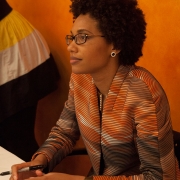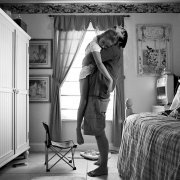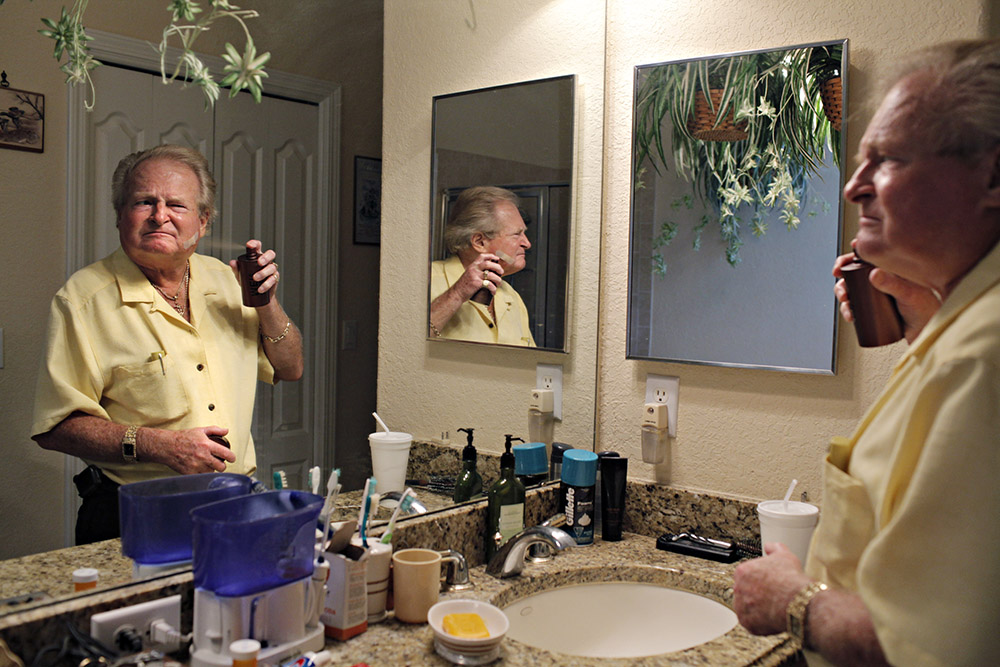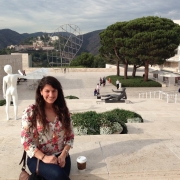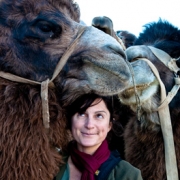LaToya Ruby Frazier Uses Her Camera to Fight For Her Community
LaToya Ruby Frazier Uses Her Camera to Fight For Her Community
By Lauren Cavalli
Images by Joe Librandi-Cowan
Photographer LaToya Ruby Frazier’s first book, The Notion of Family, documents three generations of women in her family: Grandma Ruby, her Mom, and herself. Yet, it is no ordinary family album. After working for ten years on the project, the book was published in September by Aperture, a non-profit foundation that supports photographers.
On Oct. 30, Frazier read several passages from her book during a lecture she gave at the Robert B. Menschel Media Center at Syracuse University. The SU alum is primarily a photographer, but also works in performance art and videography.
In The Notion of Family, she captures the effects of the industrial landscape of Braddock Pennsylvania on its community and conveys this complex dynamic through an intimate portrait of her family. She focused on the social, economic, physical, and emotional toll of growing up with Andrew Carnegie’s first steel mill, the Edgar Thomas Works, as a neighbor.
“The shadow of the steel mill hovered above us,” Frazier said. The mill, which has operated since 1875, omits toxins that slowly poison the community. “The haze that forms the sky is millions of tiny particles. They pass through my lungs into my bloodstream. Like carbon monoxide, they are odorless and have the potential to kill.”
In Oct. 2009, the community was informed that the University of Pittsburgh Medical Center (UPMC) would close Braddock Hospital, said Frazier. She is unforgiving of the hospital’s abandoning of its people and showcases photos of her family receiving care for their illnesses, people protesting its closing, and now, how the hospital decays from lack of use after it closed its doors and stands as a memorial to economic decline.
She stressed the importance of keeping a critical eye on television, the news, radio, and social media and urged the audience to be aware of how they affect one’s notion of what constitutes us as people – race, class, gender and religion.
Frazier recalled when she first discovered that Andrew Carnegie library in Braddock omits all African Americans from the historic suburb’s history.
“Peoples’ histories and narratives are all constructed. It is important I insert myself into my history,” Frazier said.
Frazier stands up to institutional racism and environmental degradation with her camera. Her photos of her family are a testament to the community’s ability to endure.
“I want to shed light on invisible realities,” Frazier said.
In her hometown new housing projects are being built, more people will be able to live there, but with the closing of the hospital they have nowhere to go for healthcare in a polluted city. She told the audience of the progress that Braddock is making today; artists are moving in; retail stores are opening; cultural capitol is coming in.
“They don’t think I have a right to tell this story – I am making Braddock look bad. They say: we moved beyond this,” Frazier said.
She acknowledges that revitalization efforts are happening in Braddock, but remains critical. “A restaurant was put in the Braddock mayor’s apartment building. What we needed is a grocery store, not a restaurant we can’t afford,” Frazier said.
Frazier intends to continue telling the people of Braddock’s story by “photographing it, seeing it, speaking to it, and trying to educate.”
At the conclusion of the lecture, Frazier expressed her hopes of using the money from her book sales and her prints to one day start a foundation to advocate for, help, and support the families living in Braddock amongst the city’s blatant ironies today.
“This is more than just an art book, a photo book, its my photo history – an American life – my relationship with my family and my community,” Frazier said. “A descendant of Scottish, African, Braddonian, blue-collar, steel workers, I embrace my heritage.”

